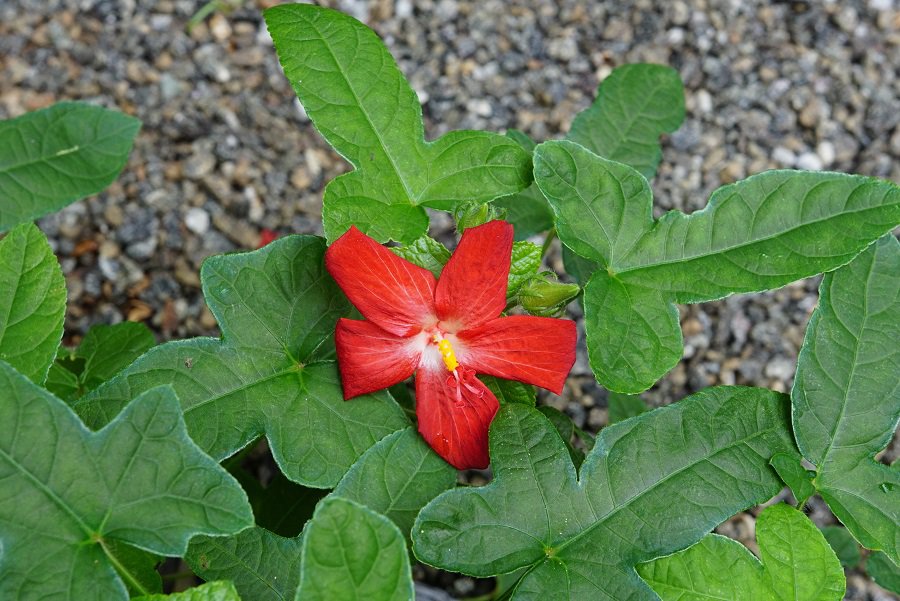Abelmoschus is a genus that has about fifteen species and belongs to the Malvaceae family.
These plants are native to the tropics of Africa, Asia, and northern Australia.
This genus of plants has both annual and perennial herbaceous species, and can reach up to 2 m in height.
In addition, many of these plants are edible, both the seeds and the leaves, which are eaten as a vegetable.
Abelmoschus sagittifolius is a perennial plant, which is around 2 m tall.
The leaves can vary in shape and size, but are usually long, broad, and lobed.
In addition, the roots of this beautiful plant are usually fleshy and quite thick.
The stem is solid and is about 30 cm tall with herbaceous one-year or perennial branches, up to 2 meters long.
Its flowers are red with white, yellow, and pink in the center.
If you like to have butterflies and bees in your garden, this plant is ideal for you since insects are attracted to the beautiful flowers they produce .
The flowering period for Abelmoschus sagittifolius is early summer and occasionally late spring.
In late summer, the fruits of this plant dry out and produce seeds.
You may like: Echeveria Agavoides Corderoyi
Abelmoschus Sagittifolius Care
If you follow this steps your succulent will stay healthy and beautiful.
Illumination
Abelmoschus sagittifolius is a plant that can grow very well in full or partial sun.
You just have to be careful with the sun during summer; excessive sun exposure can cause the plant to have heat stress.
Substratum
This plant likes sandy soils with a good amount of organic matter.
Make sure the substrate has good drainage, as although it can withstand moisture, it is better for the soil to drain well to prevent the roots from drowning or rotting.
Propagation
You can propagate your Abelmoschus sagittifolius through seeds.
Propagation by seeds is very simple.
You should collect the seeds in autumn times, but before you plant them, you must wait until spring or summer for the propagation to be successful.
Soak for 12 hours in warm water.
Then plant them in seedlings filled with a well-drained, sandy substrate.
Cover the seeds with a light layer of soil.
Place the seeds where they receive heat, but never direct sun.
Keep the soil slightly moist, never waterlogged.
After several weeks the seeds will begin to germinate.
When the plant is large and no longer fits in the seedbed, transplant your new plant into a shallow pot so that the roots have room to grow.
Remember that the substrate must have good drainage.
Watering
During the summer, you should water your Abelmoschus sagittifolius frequently.
The substrate should be kept slightly moist, but you should avoid water puddles.
During winter, water only when the soil has dried out.
Pests or diseases
Some of the pests that can attack your Abelmoschus sagittifolius are:
Aphids
Fusarium fungus
White fly
Woodlouse
Mites
Nematodes
Ants
Fertilization
When planting your Abelmoschus sagittifolius you can add a slow-release fertilizer to keep the plant nourished.
And make sure the fertilizer does not have a high nitrogen content.
Temperature
The ideal temperature is between 25°C/77°F to 35°C/95°F during the day and approximately 10°C/50°F at night.
Transplant
You can transplant your Abelmoschus sagittifolius when you notice that the plant no longer fits in the pot, especially if you notice that the roots are coming out of the drainage hole.
If you have it directly in the garden, the transplant is not necessary.
Pruning
You do not need to prune the plant; what you can do is remove the leaves and fruits that are withered or infected by a plant to prevent the pest from spreading.
I hope this article was helpful; if you have any questions, let me know.
